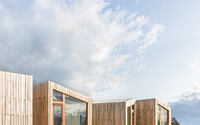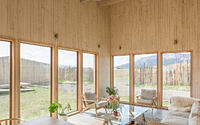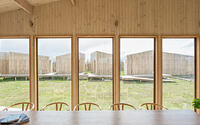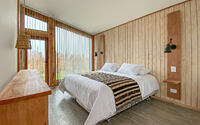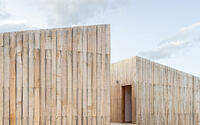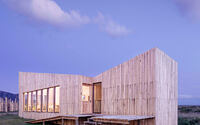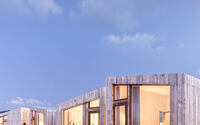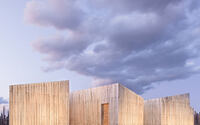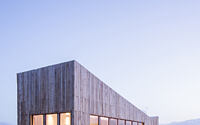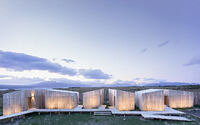AKA Patagonia by Larrou_Arq
Recently designed by Larrou_Arq, these 6 modern prefab modules are situated in Puerto Natales, Chile.









About AKA Patagonia
Patagonia: A Symphony of Natural Contrasts
Patagonia stands as a premier tourist hotspot, not just in Chile but globally. Its vast landscape strikes with its rawness, leaving visitors deeply connected to the terrain.
Immediately, the dance of the elements grabs your attention. Water pairs with glaciers, rocks bond with mountains, and trees unify with the earth. The fusion of these materials, forms, and hues creates a vivid distinction between the solid and liquid, the mountain crag, and the sprawling valley.
Architectural Tribute to Nature
Rooted in these juxtapositions, the Aka Patagonia project emerges. It’s an architecture born from earth, blending seamlessly into nature with structures resembling the mountains, volcanoes, and glaciers dotting Puerto Natales’ horizon.
Indeed, Aka Patagonia pays homage to its surroundings.
Situated atop a valley in Puerto Natales, the project offers panoramic vistas. Gaze out and you’ll find the horizon interrupted by towering ridges, majestic volcanoes, and sprawling glaciers.
Innovative Construction Meets Immersive Views
The design incorporates six modules (individual double rooms complete with bathrooms) and a shared module designed for relaxation and socializing.
Constructed off-site, these six prefabricated wooden modules were meticulously positioned on location. Their arrangement not only captures mesmerizing views of nature’s wonders but also ensures optimal natural daylight. Remarkably, the entire structure, resting on pilings, minimizes environmental impact.
Inside and out, guests constantly engage with nature’s uninterrupted flow.
The Lenga Tree: Nature’s Protective Shield
Native to the region, the lenga tree envelops Aka Patagonia, even shielding its roof. This formidable tree thrives in the harshest conditions—poor soil, biting cold, and fierce winds—where other species falter.
Blending Built Spaces with Nature
Material aging remains integral to the project’s essence. Over time, this architecture aims for harmony with its surroundings, sans rivalry or vanity. Instead, it gracefully becomes one with the landscape.
Photography by Fernanda Del Villar @mfdv_
- by Matt Watts